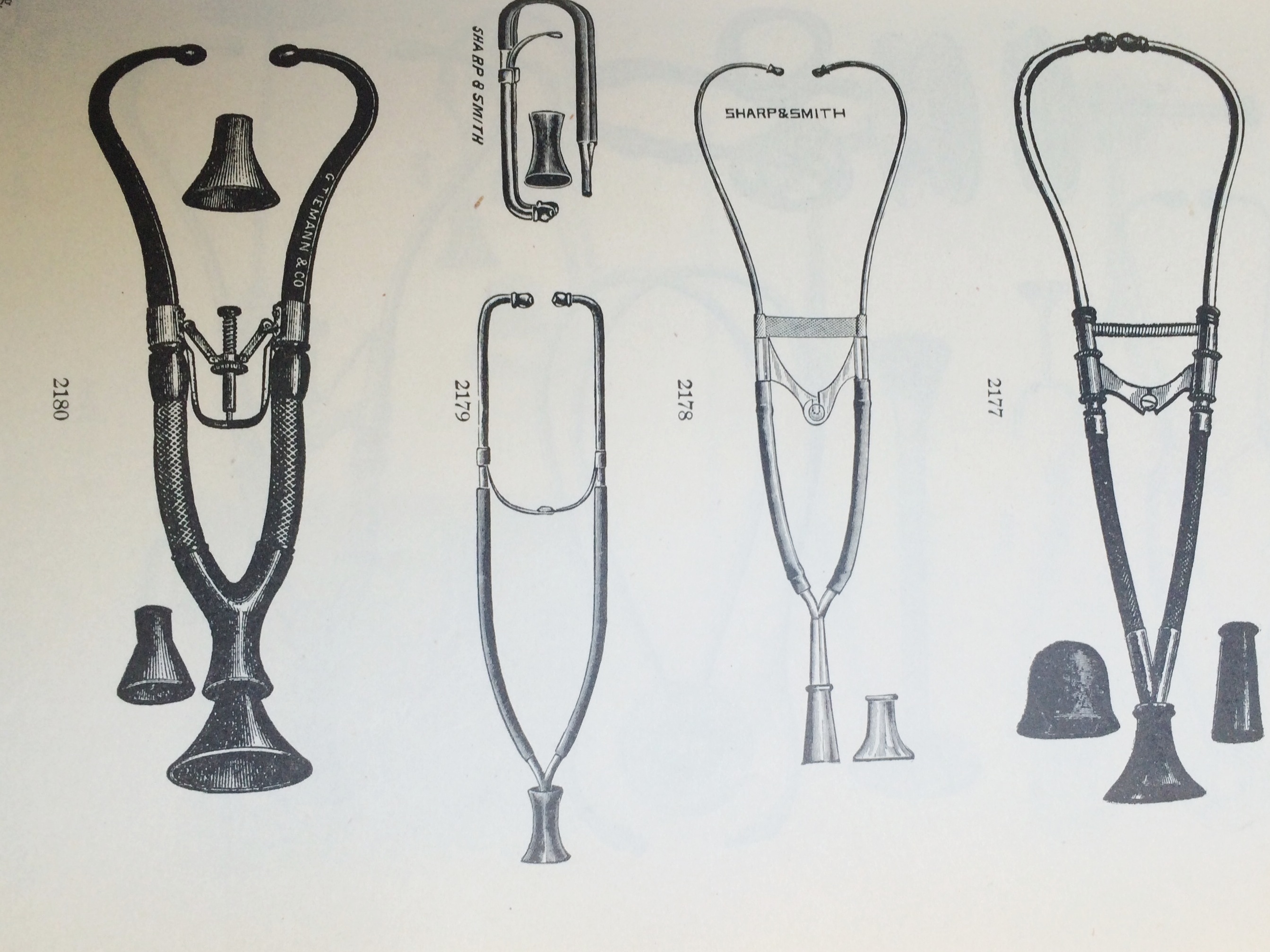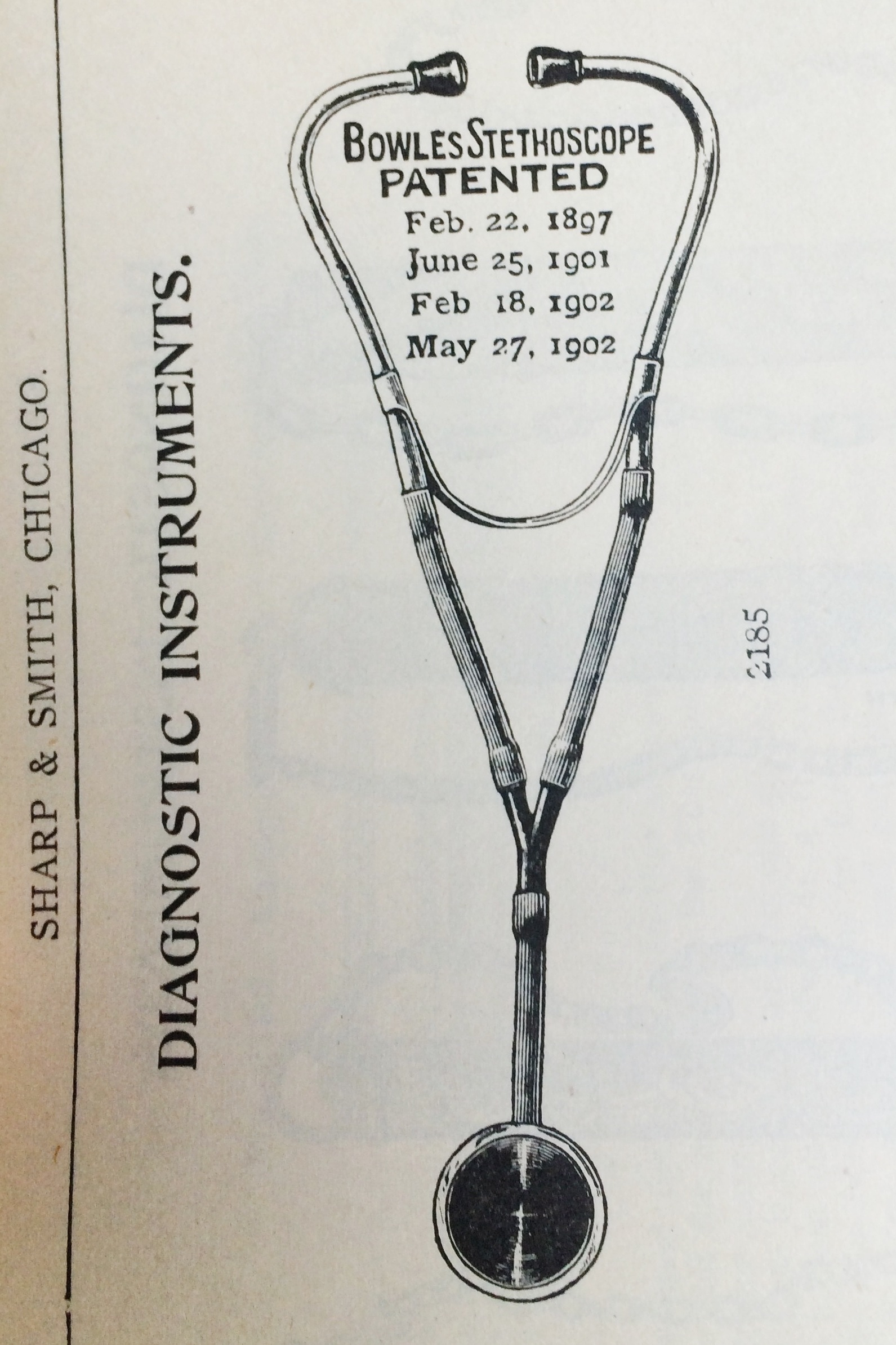Cinemax’s The Knick transports viewers to at a New York hospital at the turn of the twentieth century to listen in on the drama between colleagues and patients. Each episode shows the variety of early instruments, ranging from x-rays to thermometers, used by doctors in 1900 to diagnose disease and trauma. While these objects were able to speak to the body’s condition — the shape of a broken bone or the magnitude of a fever, it was the stethoscope that brought the actual sounds of the heart or lungs to the diagnostic listener. What stories did these devices hear and do they have their own tales to tell?

From the Sharp & Sharp Catalog of Instruments, 1905, displaying the variety of Cammann Stethoscopes available.
The stethoscopes most widely used at the time of the fictional Knickerbocker Hospital were the Cammann Stethoscope, originally devised in the 1850s and the Bowles Stethoscope, which was developed in 1897 [1]. Dr. Cammann of New York was the first to successfully design a binaural stethoscope, which was soon became popularized in the United States and England. Previous stethoscopes had been tubular in their design, allowing the body’s sounds to be heard in only one ear [2]. Note that the length of the stethoscope would have placed the physician using is in close proximity of the patient. Although this model bears Cammann’s name, he never patented the device because of it’s huge value to the medical field. In the early 1900’s these models were still commonly used with few adjustments to Cammann’s original design [3].
The Bowles Stethoscope used a shallow cup-like chest piece covered by a stretched pig skin diaphragm which was unlike the bell-shaped design of Cammann’s original model [4]. Bowles, who worked as an engineer, created this diaphragm so that the sounds of the body could be heard more distinctly. The clarity of listening made this model ideal for both practitioners and teachers by the turn of the twentieth century. Some models were comprised of up to a dozen ear pieces which would allow multiple students to diagnose conditions, but the typical model was still relatively short by today’s standards.
References
[1] Buck, Albert, ed. 1904. A Reference Handbook of the Medical Sciences Embracing the Entire Range of Scientific and Practical Medicine and Allied Science. Vol. VII. New York, NY: William Wood and Company. [2] Hudson, Erasmus Darwin, Jr. 1887. A Manual of the Physical Diagnosis of Thoracic Diseases. New York, NY: William Wood and Company. [3] Catalogue of Sharp & Sharp, Manufacturers and Importers of High Grade Surgical and Veterinary Instruments and Hospital Supplies, 20th Edition. 1905. Chicago, IL. [4] Cabot, Richard C. 1905. Physical Diagnosis. 3rd Edition. New York, NY: William Wood and Company.

